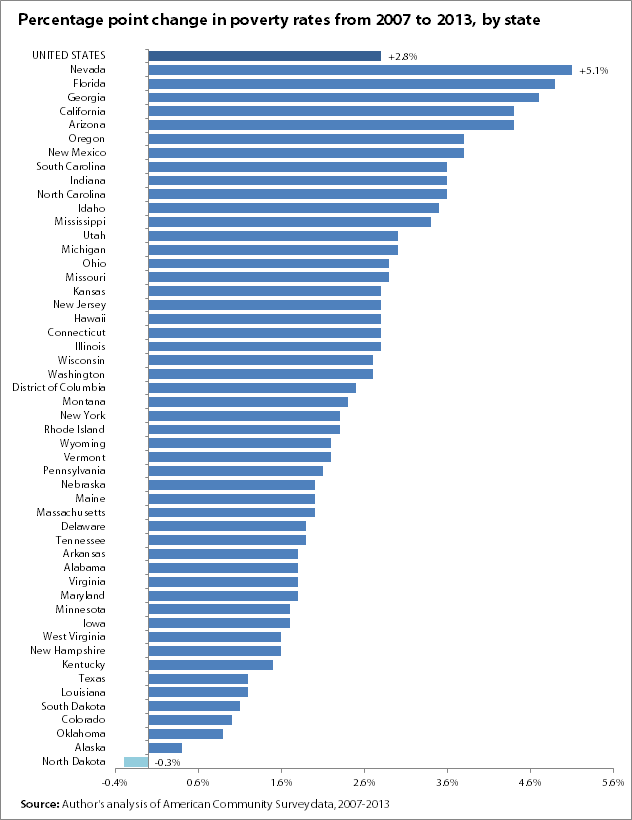ACS Data Show Almost No Improvement in State Poverty Rates
The American Community Survey (ACS) poverty data that were released by the Census Bureau earlier today showed that poverty rates were essentially unchanged from 2012 to 2013 in virtually every state.1 Only six states had significant changes in their poverty rates: Colorado (-0.7 percentage points), New Hampshire (-1.3 percentage points), New Jersey (+0.6 percentage points), New Mexico (+1.1 percentage points), Texas (-0.4 percentage points), and Wyoming (-1.7 percentage points). All other states had no significant change from their 2012 poverty rates.
The increases in poverty in New Jersey and New Mexico are the most troubling, although the lack of any significant decrease in most other states is also deeply frustrating. As shown in the figure below, North Dakota is the only state where the poverty rate has fallen back down to pre-recession levels. In every other state nationwide, poverty rates remain significantly above their 2007 levels.
The failure to see any significant reduction in poverty over the last several years is a direct consequence of the continued weakness in the labor market. (It’s not surprising that poverty has fallen in North Dakota given that the state’s unemployment rate has averaged 3.3 percent from the start of the recession to today.) At the same time, however, policymakers have directly stymied poverty reduction by cutting back on unemployment insurance. If we want to start bringing poverty rates down, we need to restore the labor market back to full health, lift wages, and start sharing economic growth more broadly.

1. The ACS data also showed no significant change in the national poverty rate. This differs from the official national poverty rate generated from the Current Population Survey (CPS) that was released earlier this week, which did show a significant decrease in the share of families in poverty. This discrepancy is due to differences in the way the two surveys treat household members not related to the head of household, and the fact that the ACS data reflect a slightly different timeframe than the CPS. See here for further explanation.
Enjoyed this post?
Sign up for EPI's newsletter so you never miss our research and insights on ways to make the economy work better for everyone.